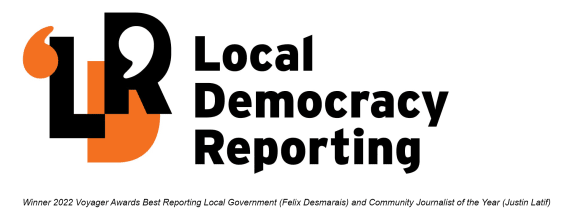
Queen Charlotte Drive repairs after the two storm events in the Marlborough Sounds. Photo: NZTA
Plans to spend nearly $40 million upgrading marine infrastructure in the Marlborough Sounds have been labelled "unnecessary", while others are worried their area will miss out on improvements.
The Marlborough District Council plans to upgrade marine infrastructure recognising that large swathes of the road network could be wiped out at any time as was seen after flooding in July 2021 and August 2022.

More research is needed but current estimates put the cost of marine improvements at $39m, a bill which at this stage the council will shoulder. Part of that includes $6.75m budgeted for further study, a council spokesperson said.
Some repairs to existing marine infrastructure would start following the adoption of the long term plan in July, but any spending on "new marine maintenance" would not kick in for another five years.
What are the marine options?
According to the consultation document for the council's long term plan, marine infrastructure improvements included protecting and upgrading primary hubs in Waitohi Picton and Havelock.
It also included constructing a new arterial hub on the northern side of Kenepuru Sound, near Goulter Bay or Waitaria Bay.
Arterial hubs in Torea, Portage and Elaine Bay would be protected and upgraded.
Others hubs to be protected and upgraded across the Sounds included Bulwer Bay, Cissy Bay, Penzance Bay, Duncan Bay, Double Bay, Fish Bay, Punga Cove, Te Mahia Bay and Moetapu Bay.
The marine options identified had come about because of the council's "hazard adaptation pathways", identified in the Sounds Future Access Study in 2023.
The engagement document for that study said the government required the council to identify pathways that recognised the future risks of significant events such as storms, earthquakes and sea level rise.
"These pathways deliver the lowest level of service council is willing to provide, while still delivering safe transport solutions and access in and out of the Sounds."

Waitaria Bay in the Kenepuru Sound could have its marine infrastructure upgraded. Photo: Marlborough Express via LDR
What are people saying?
Feedback through the council's long term plan indicated Okiwi Bay residents had concerns about the marine upgrades in their corner.
Okiwi Bay Ratepayers Association member Robbie Peat asked in his submission why Okiwi Bay had no investment for improvements in its marine hub.
"Due to the fragility of the roading system, when another adverse weather event occurs, the probability of the roads being closed for an extended period is very high," his submission said.
Another Okiwi Bay resident said the wharf at Okiwi Bay, one of the largest settlements in the Sounds, had been "forgotten".
"The wharf needs a bit of upgrading and is needed if a weather event takes out the road.
"If a weather event happens, people from any part of New Zealand could be isolated and need to go out by sea."

Damage to Kenepuru Road following bad weather in July 2021. The council plans to upgrade marine infrastructure in the area. Photo: Marlborough Express / Supplied via LDR
Another said the wharf in its current state was "dangerous", "hard to access" and had no safety railing.
"During the last significant rainfall event, which damaged road access to Okiwi Bay and to Elaine Bay, this wharf had to be used for transport."
But others were not as keen for the marine options.
One submitter said the council should not provide the funding.
"Holiday home owners in parts of the Sounds with no road access (including our family) have had to fund their own wharfs and moorings," their submission said.
They suggested the council do "everything in their power" to make getting a resource consent for wharfs and moorings as easy as possible instead.
Another said any new spending on Kenepuru marine infrastructure was "unnecessary" and "gave no value to the ratepayer at all".
A pensioner with a property in the Kenepuru Sound for 52 years said marine access was not a viable transport alternative for them.

Capital cost timeline for repairs to the Marlborough Sounds roads and marine infrastructure. Photo: Marlborough District Council
Capital cost timeline for repairs to the Marlborough Sounds roads and marine infrastructure.
But the roads are being repaired?
The estimated repair bill for the roads is $230m, so upgrades to marine infrastructure are the back-up option, should access to the Sounds get cut off again.
NZ Transport Agency Waka Kotahi had signalled it would fund a big chunk of those road repairs, with ratepayers expected to shoulder $104m. The marine infrastructure upgrades would be paid by the council, although there could be opportunity to apply for other government grants and assistance.
At a Zoom meeting during the submission period for the long term plan, council chief executive Mark Wheeler said the marine infrastructure was particularly important if there was another storm event within the next five years.
"At that point we would obviously have to assess what that would mean to council's finances," Wheeler said.
"Also we'd have to take into account how much Waka Kotahi were prepared to reinvest in the roads at that point."
LDR is local body journalism co-funded by RNZ and NZ On Air.





